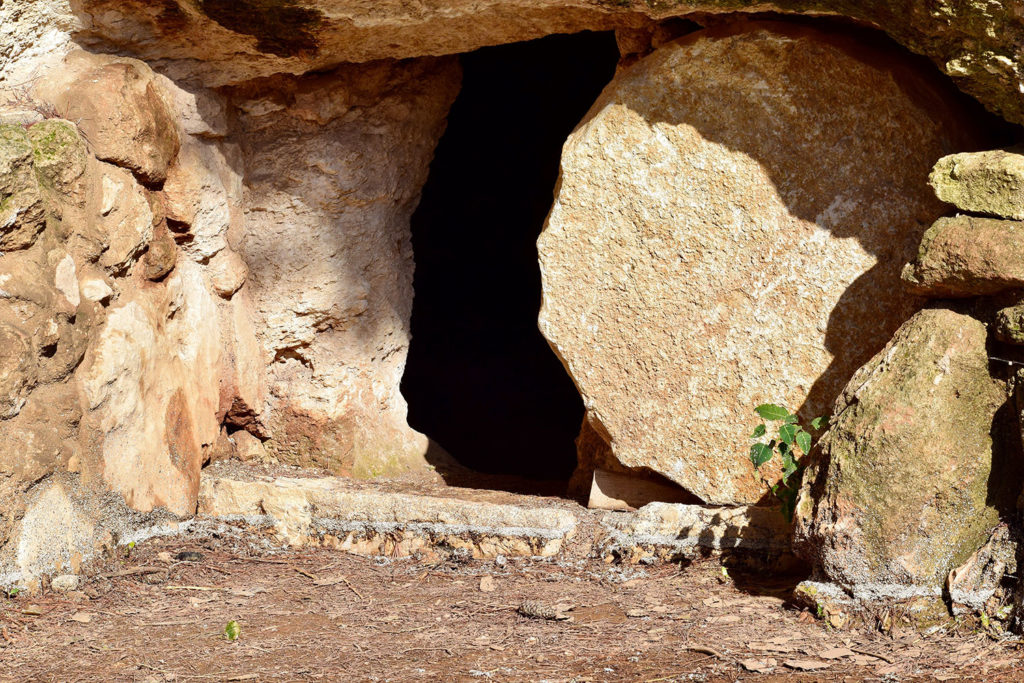by Gary R. Habermas
An intriguing development in recent theological research is that a strong majority of contemporary critical scholars seems to support, at least to some extent, the view that Jesus was buried in a tomb that was subsequently discovered to be empty. I will list several of the more than 20 arguments that have been cited in favor of the empty tomb.
Major Arguments for the Empty Tomb
(1) Perhaps the most powerful argument favoring the empty tomb concerns its location and the events surrounding it. The Gospel accounts are unanimous that Jesus was buried in a tomb that was located in Jerusalem. Few critics question this, holding that Jesus died and was buried in the city. Most also agree that early Christian preaching took place here, leading to the birth of the church.
But it is precisely since Jesus’ grave was located nearby that we have a serious problem if it was anything but empty. Unless Jesus’ tomb was unoccupied, the early Christian preaching would have been disproved on the spot. How could it be preached that Jesus had been raised from the dead if that message were starkly confronted by a rotting body? Exposing the body would kill the message and be an easy disproof of Christianity before it even gained momentum. Thus, Jerusalem is the last place for the early Christian teachings to gain a foothold unless Jesus’ grave was empty. A Sunday walk to the tomb could have settled the matter one way or another.
A creative response might be to assert that perhaps the body was indeed in the tomb, but that, very soon afterwards, the body would have been unrecognizable, due to its decomposition. Or perhaps the tomb was still simply closed without being opened for inspection.1 But these questions miss entirely the point of the Christian preaching that the tomb was empty. Therefore, if any body was found in Jesus’ tomb, whether Jesus’ or even someone else’s, or if it were still closed, this would have contradicted the teaching that it was empty. In Jerusalem, the mistake would have been exposed in no time.
(2) The most-mentioned argument in support of the Gospel accounts is the unanimous agreement that women were the first witnesses to the empty tomb. While it is not strictly true that women were disallowed from testifying in a court of law, it was clearly the case that there was a strong prejudice against using female testimony for important matters.2
Notwithstanding this common stance, the Gospel accounts insist in their proclamation that the women were the star witnesses to the empty tomb. But why should these writers highlight female testimony unless the women really were the first to discover this fact? To do so would be to weaken their case considerably in the eyes of most listeners. Given this situation in first century Palestine, we can only conclude that the Gospel authors were clearly convinced that the women had discovered the empty tomb. They were more interested in reporting the truth than they were in avoiding criticism. This argument is very widely recognized and few scholars have challenged it, which testifies to its strength.
(3) While the empty tomb accounts in the Gospels are later than Paul’s writings, it is crucially important that the empty tomb accounts are witnessed by many. In other words, whichever major view of Gospel origins one takes, the empty tomb narratives arose from more than one independent source. In fact, scholars think that there could be as many as three or four independent traditions in the Gospels, which very strongly increases the likelihood that the reports are both early and historical. Along with the Jerusalem location and the testimony of the women, I think that these are the best arguments in favor of the empty tomb.
(4) Most recent scholars seem to agree that, while Paul does not explicitly mention the empty tomb, the early tradition that this apostle reported to others in 1 Corinthians 15:3-4 implies an empty tomb. The listing of the Gospel content moves from Jesus’ death, to his burial, to his resurrection from the dead, to his appearances. This sequence strongly suggests that, however it may have been transformed, Jesus’ body that died and was buried is the same one that was raised afterwards. Thus, what was placed in the ground is precisely what emerged. In short, what went down is what came up. Such a process would have resulted in the burial tomb being emptied.
That Paul does not specifically mention the empty tomb keeps this from being as strong a point as it could have been. Still, to say so clearly that Jesus’ dead body was buried, raised, and appeared would be a rather strange process unless the tomb had been vacated in the process.
(5) Many scholars also concede that Acts 13 may very well contain another early tradition, an early sermon account that was included in a book that was written at a later date. This report, found in Acts 13:29-31, 36-37, is attributed to Paul and clearly teaches that Jesus’ body was placed in a tomb. Then he was raised and appeared to His followers without undergoing any bodily decomposition. If so, here we would have an early text where Paul even more strongly acknowledged the empty tomb, because Jesus appeared and his body did not experience any decay.
(6) According to reports that are found in Matthew 28:11-15, Justin Martyr3 and Tertullian,4 for almost two centuries or more, the Jewish leaders tried to explain that the tomb was empty because Jesus’ disciples stole His body. This means that the Jewish hierarchy even acknowledged the fact that Jesus’ body was no longer there!
However, even skeptics freely recognize that the explanation provided by the Jewish leaders was exceptionally weak. For example, if the disciples stole Jesus’ body, how can we account for their incredible transformations, such as forfeiting their family years, as well as their jobs, health, and even their peace, all for the right to be chased for decades around the Roman Empire, just so they could preach a message that they clearly knew was a false tale? Further, how do we explain their willingness to die for what they knew was a false proclamation of Jesus’ resurrection? Moreover, how does this explanation allow us to account for the conversion of Jesus’ brother James, who had rejected Jesus’ message? And we also lack any convincing reason for Paul’s conversion from Judaism. So, all for the sake of providing a clearly unconvincing alternative account, the Jewish leaders even admitted the empty tomb!
(7) A word should be said about the scholarly thesis of N.T. Wright5 and others. In the ancient world—whether pagan, Jewish, or Christian—writings up until the second century A.D. were in complete agreement that the very definition of resurrection was clearly a bodily notion. In fact, there are almost no exceptions to this ancient view that being raised from the dead is something that, if it ever occurred, could happen only to the body. So it had this same meaning throughout the Old Testament and Gospel accounts, as well as in Paul’s writings and the rest of the New Testament teaching about Jesus. This would indicate that Jesus’ resurrection was conceived in a bodily manner, necessitating that the tomb was empty.6
Conclusion
These are some of the reasons why a majority of contemporary scholars recognize the fact of the empty tomb. Still other arguments could be provided, as well. That is why historian Michael Grant concludes that “the historian . . . cannot justifiably deny the empty tomb” because if we apply the same historical criteria that we use elsewhere, then “the evidence is firm and plausible enough to necessitate the conclusion that the tomb was indeed found empty.”7
In light of arguments such as those we have produced here, this conclusion seems to be very difficult to avoid. The normal application of historical rules to the various data indicates that, just shortly after his death, Jesus’ tomb was indeed found empty.
End Notes
1Regarding the suggestion that Jesus was never buried in a tomb, see the nine criticisms listed in Gary R. Habermas, The Historical Jesus: Ancient Evidence for the Life of Christ (Joplin, MO: College Press, 1996), pp. 127-129.
2An excellent discussion of these issues is provided in Carolyn Osiek, “The Women at the Tomb: What are they Doing There?” Ex Auditu, Vol. 9 (1993), pp. 97-107.
3Dialogue with Trypho 108.
4On Spectacles 30.
5The Resurrection of the Son of God (Minneapolis: Fortress Press, 2003).
6Wright, pp. 32-479, especially pp. xix, 31, 71, 82-83, 201-206, 273, 314, 710.
7Michael Grant, Jesus: An Historian’s Review of the Gospels (New York: Macmillan Publishing Co., 1992), p. 176.
Published March 30, 2016




